Uruguay
Discover Uruguay
Uruguay is a charming country nestled in the southeastern region of South America. Known for its rich culture, diverse landscapes, and friendly people, Uruguay offers an array of experiences for visitors.
From the vibrant capital city of Montevideo to the pristine beaches of Punta del Este, this country has something for everyone. With a fascinating history and a strong tradition of tango dance, Uruguay invites travelers to explore its unique blend of modernity and tradition. The country’s distinct cuisine, diverse wildlife, and passionate football culture further contribute to its allure.
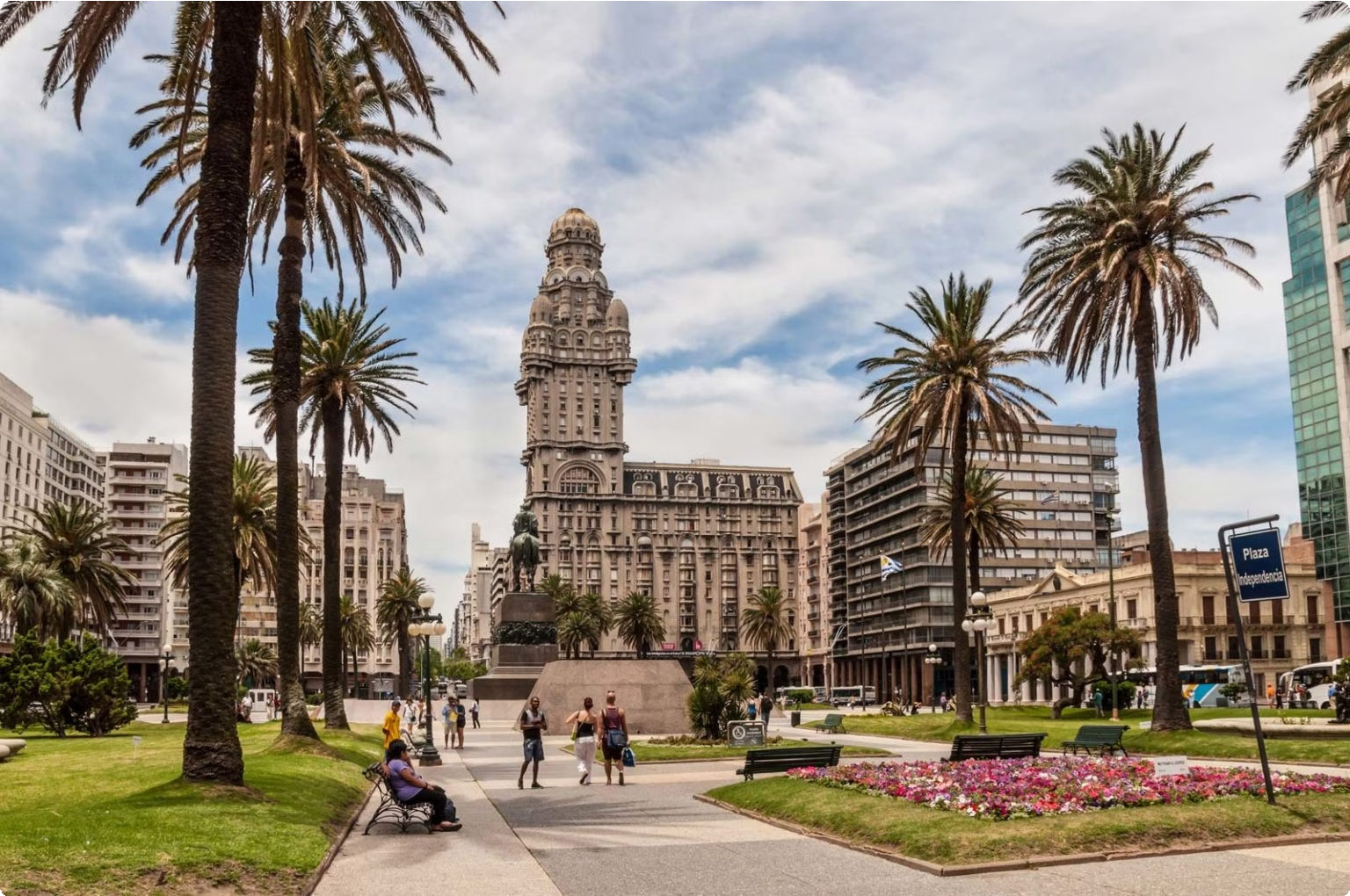
Flag of Uruguay
The flag of Uruguay consists of nine horizontal stripes of white and light blue, with the top and bottom stripes being white. In the upper left corner, there is a white sun with a face, representing the Sol de Mayo, which is a national symbol of Uruguay. The sun has sixteen wavy and alternating straight rays. The design of the flag is deeply symbolic, with the white stripes representing the peace and tranquility of the country, while the blue stripes symbolize the sky and the Atlantic Ocean.
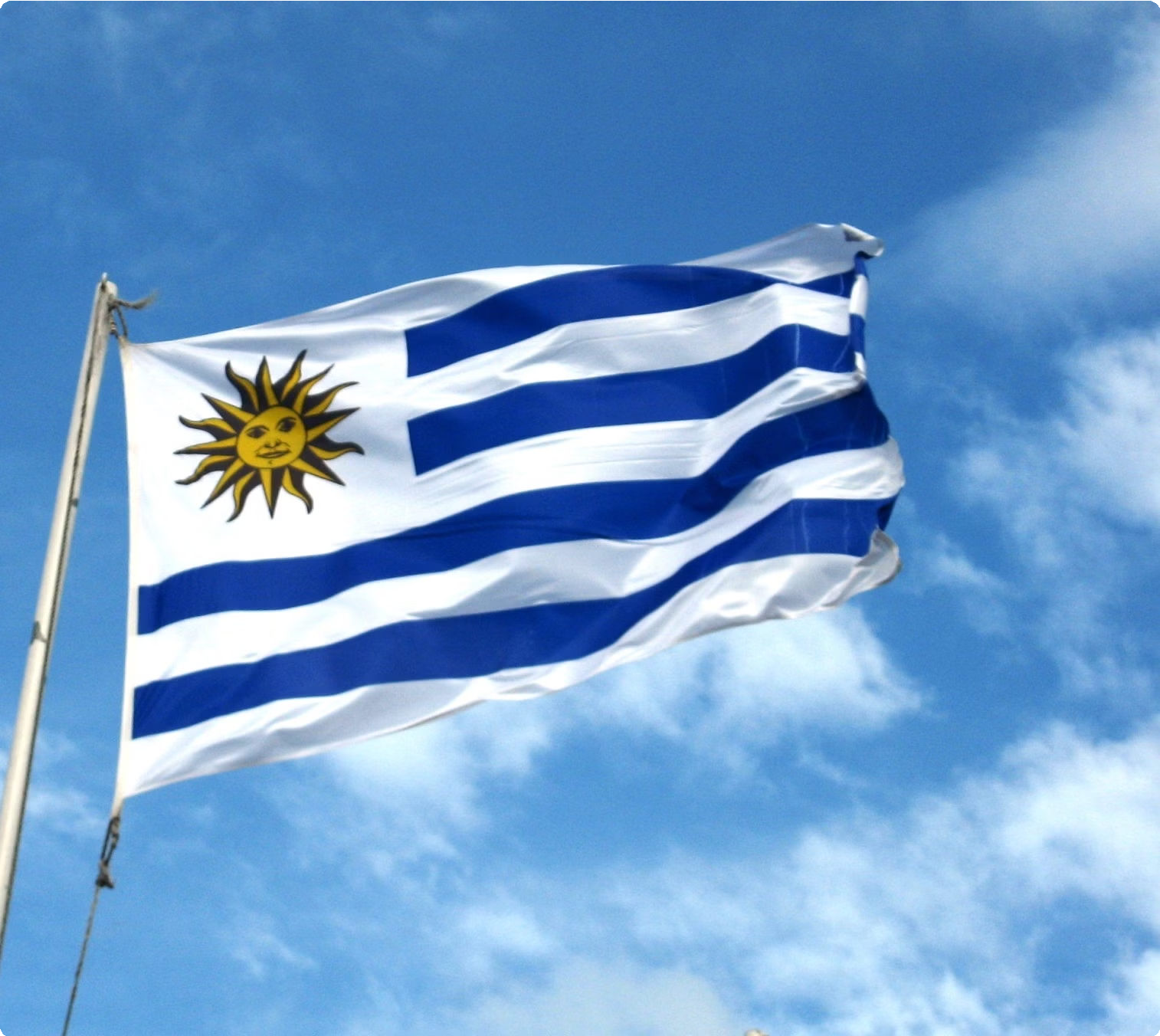
Uruguay’s flag is a powerful national emblem that reflects the country’s values and history. The Sun of May is a significant feature, symbolizing the freedom and independence of Uruguay, and its design carries a rich cultural and historical significance for the people of Uruguay.
Map of Uruguay
Uruguay, a South American country situated between Argentina and Brazil, has a diverse landscape that includes rolling hills, coastline, and fertile plains. The capital city, Montevideo, is located on the southern coast and is a vibrant cultural hub.
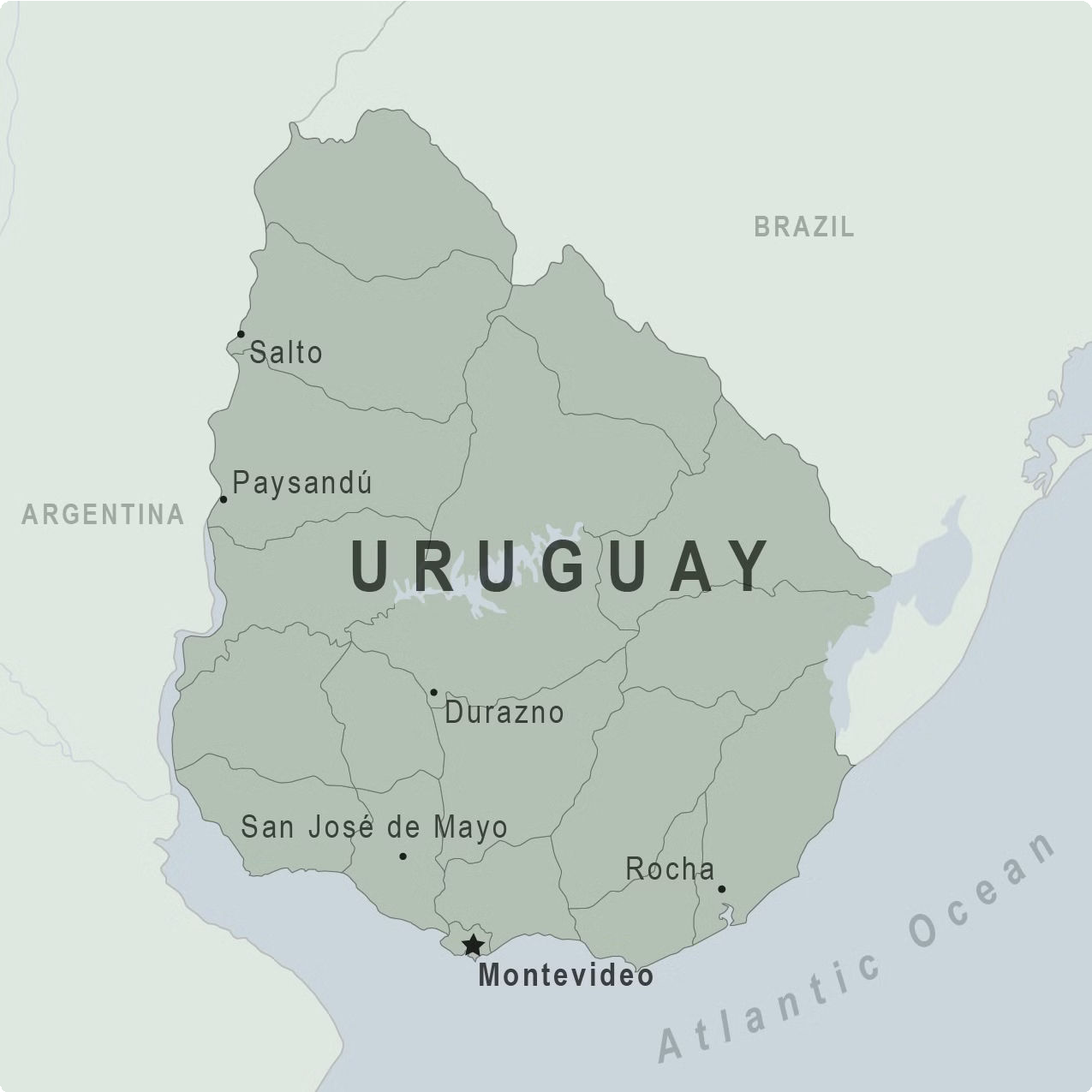
The map of Uruguay showcases the country’s geographical features, including its major cities, rivers, and natural reserves. It highlights the strategic location of Uruguay, which has played a significant role in its historical and economic development.
Currency of Uruguay
Uruguayan Peso
The official currency of Uruguay is the Uruguayan peso (UYU). The symbol for the Uruguayan peso is $, just like the US dollar, which can sometimes cause confusion. One Uruguayan peso is divided into 100 centésimos.
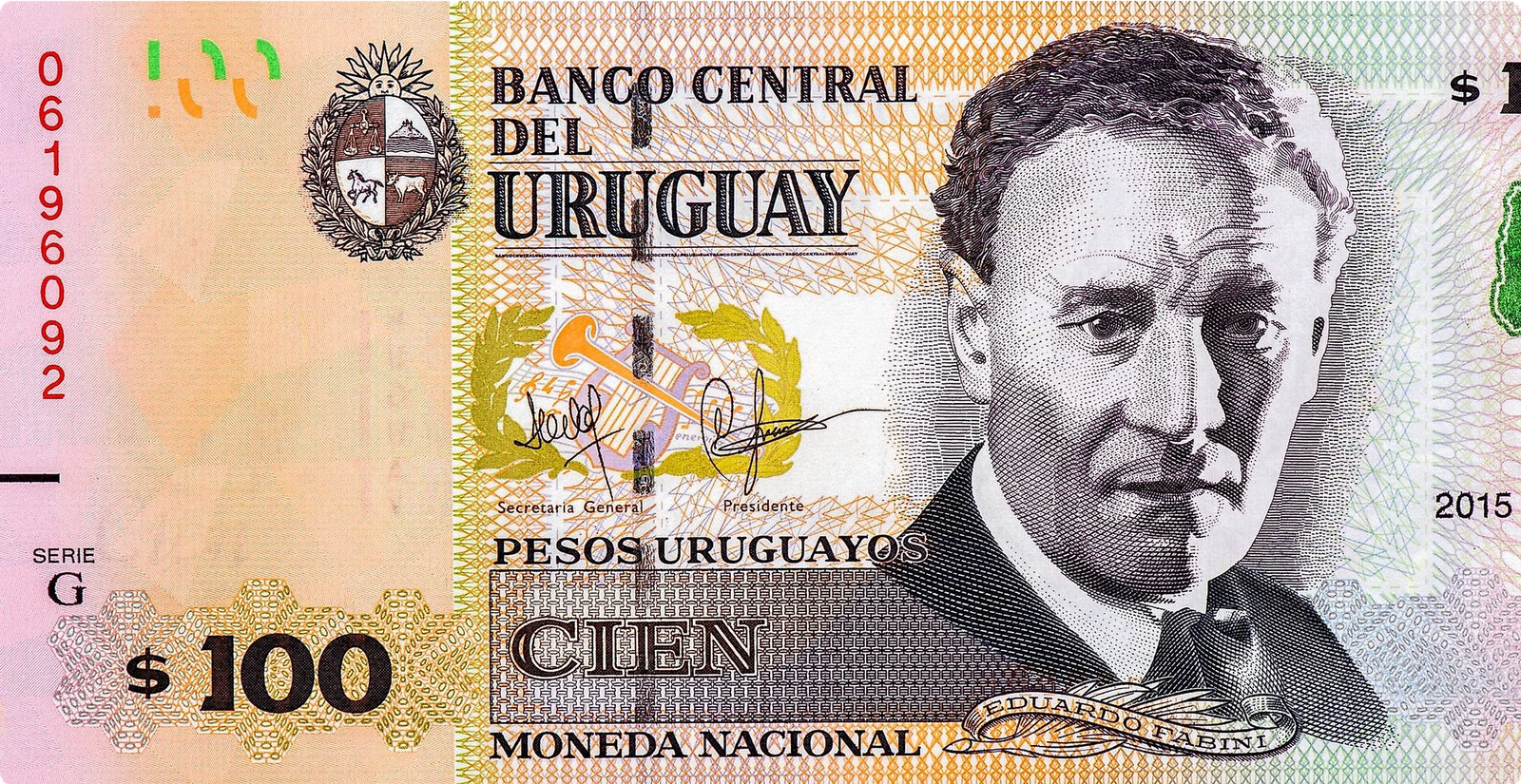
Currency Exchange
Foreign currency can be exchanged at banks and exchange offices in Uruguay. It’s advisable to exchange currency at official exchange locations to avoid counterfeit money and unfair rates.
Additionally, credit and debit cards are widely accepted in cities and tourist areas.
ATMs and Cash Withdrawals
ATMs are widely available in Uruguay, especially in urban areas. Travelers can withdraw Uruguayan pesos from ATMs using their international debit or credit cards. However, it’s important to notify the bank of international travel to avoid card blocks due to suspected fraud.
Economy of Uruguay
Stable Economy: Uruguay has one of the most stable economies in South America, with a strong emphasis on social welfare and development.
Key Sectors: The country’s economy is characterized by its agricultural and livestock sectors, as well as growing industries in technology, renewable energy, and tourism.
Export and Trade: Uruguay is known for its export of high-quality agricultural products such as beef, rice, and dairy, and it has strong trade relations with neighboring countries and international markets.
Progressive Policies: The government has implemented progressive policies to attract foreign investment, promote innovation, and ensure sustainable economic growth.
Culture of Uruguay
Uruguayan culture is a blend of European and indigenous influences, resulting in a rich and diverse heritage. The country is known for its passion for music, dance, and vibrant traditions.
One of the most iconic cultural expressions is the “Candombe” music and dance, which originated from African rhythms brought to Uruguay by enslaved people. This lively and rhythmic dance is performed during Carnival and other festive celebrations, symbolizing the unity and resilience of the Afro- Uruguayan community.

The Uruguayan people also hold a deep appreciation for “mate,” a traditional drink made from steeping dried leaves of the yerba mate plant. Drinking mate is a social activity, encouraging friends and family to gather and share the special gourd and bombilla used to consume the beverage.
The architecture and art scene in Uruguay reflect a mix of colonial and modern influences, with a burgeoning street art movement that adds color and creativity to the urban landscape.
Traditional Dance in Uruguay
Uruguay is known for its rich cultural heritage, and its traditional dances are a vibrant expression of the country’s history and identity. One of the most iconic traditional dances in Uruguay is the “Candombe.” Originating from African rhythms brought by slaves to Uruguay, the Candombe is a lively and rhythmic dance performed during various cultural celebrations and events.

Accompanied by the beat of the “tamboril,” a traditional drum, the Candombe dance involves intricate footwork and energetic movements, captivating audiences with its dynamic and colorful performances. The dance serves as a testament to Uruguay’s diverse cultural influences and has become an integral part of the country’s cultural fabric.
Famous food in Uruguay
Uruguay is famous for its traditional dish called “asado” which is a barbecue featuring various cuts of meat including beef, lamb, and pork. The meat is cooked slowly over a wood fire, infusing it with a smoky flavor and resulting in tender, succulent cuts. Asado is often accompanied by chimichurri sauce, a zesty combination of fresh herbs, garlic, vinegar, and olive oil. Another beloved Uruguayan food is “chivito,” a hearty sandwich made with thinly sliced meat, cheese, lettuce, tomato, and mayonnaise.
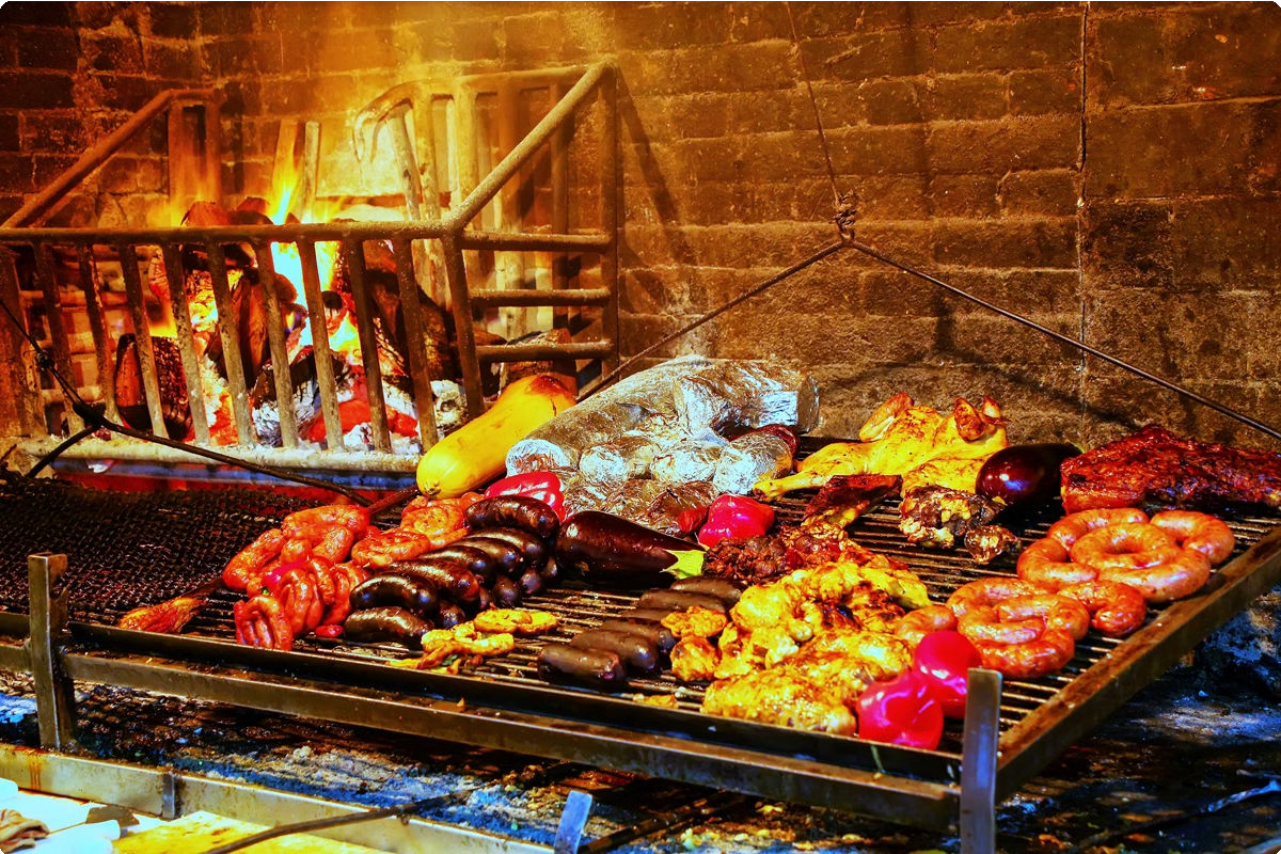
Visitors to Uruguay also enjoy “empanadas,” delicious pastries filled with meat, cheese, or vegetables, and “milanesa,” a breaded and fried meat cutlet. For dessert, “dulce de leche” is a must-try—a caramelized milk confection used in a variety of sweet treats like cakes and pastries. The culinary scene in Uruguay reflects a rich blend of flavors influenced by European and indigenous traditions, making it a delightful destination for food enthusiasts.
Famous celebrities from Uruguay
Natalia Oreiro
Natalia Oreiro is a renowned Uruguayan singer, actress, and fashion designer. She gained international fame for her roles in telenovelas such as “Muñeca Brava” and “Kachorra.” Her music career has also been highly successful, with hit songs like “Cambio Dolor” and “Me Muero de Amor.” In addition to her artistic talents, Natalia Oreiro is also known for her philanthropic work, particularly for her involvement in social causes related to children’s rights and education.

Diego Forlán
Diego Forlán is a legendary Uruguayan footballer who achieved great success in his career. He played for prominent clubs such as Manchester United, Atletico Madrid, and Inter Milan. Forlán made history during the 2010 FIFA World Cup, where he won the Golden Ball as the best player and helped lead the Uruguay national team to the semi-finals. His exceptional skills, sportsmanship, and leadership have made him one of Uruguay’s most beloved sports figures.

Best Cities to Visit in Uruguay
Montevideo
Montevideo, the capital city of Uruguay, is a vibrant and eclectic metropolis with a rich cultural heritage. Visitors can explore the historic Ciudad Vieja (Old City), stroll along the picturesque waterfront, and experience the energetic atmosphere of the Mercado del Puerto. The city also offers a variety of museums, art galleries, and beautiful parks, making it a must-visit destination for those seeking a blend of history, culture, and modern urban life.
Punta del Este
Punta del Este is a glamorous beach resort destination known for its stunning coastline, luxurious accommodations, and vibrant nightlife. Travelers can indulge in water sports, relax on the pristine beaches, and explore the iconic La Mano sculpture emerging from the sand. The city also boasts upscale shopping, fine dining restaurants, and a lively arts and culture scene, making it a popular choice for sun-seekers and jet-setters alike.
Colonia del Sacramento
Stepping into Colonia del Sacramento feels like a journey back in time, with its charming cobblestone streets, colorful colonial buildings, and well-preserved historic quarter. This UNESCO World Heritage site offers a serene atmosphere, making it perfect for leisurely walks, exploring art galleries, and enjoying breathtaking views of the Rio de la Plata. The city’s serene ambiance and rich history make it an enchanting destination for history enthusiasts and romantic getaways.
Salto
Salto is renowned for its rejuvenating hot springs, offering visitors the opportunity to unwind in natural thermal pools surrounded by scenic landscapes. Beyond the relaxing hot springs, Salto also features historical landmarks, such as the Salto Grande Dam and the impressive Artigas Dam, allowing travelers to experience both natural serenity and engineering marvels. The city’s peaceful ambiance and therapeutic hot springs make it a desirable destination for wellness seekers and nature enthusiasts.
Top Tourist Attractions in Uruguay
Casapueblo
Casapueblo, located near Punta del Este, is a unique and iconic building created by the renowned Uruguayan artist Carlos Páez Vilaró. This impressive structure serves as a museum, art gallery, and hotel, offering breathtaking panoramic views of the Atlantic Ocean and housing an impressive collection of the artist’s works.
Isla Gorriti
For those seeking relaxation and natural beauty, Isla Gorriti is a must-visit destination. This picturesque island, just a short boat ride from Punta del Este, boasts pristine beaches, crystal-clear waters, and a tranquil atmosphere, making it an ideal spot for sunbathing, swimming, and enjoying the coastal scenery.
Montevideo, the capital city of Uruguay
Montevideo, the vibrant capital city of Uruguay, is a beautiful blend of old-world charm and modern urban culture. Its rich architectural heritage is evident in the historic Ciudad Vieja (Old Town), where colonial buildings stand alongside trendy cafes and art galleries. The city is lined with stunning promenades overlooking the Rio de la Plata, offering breathtaking views of the water and the city skyline.
The lively Mercado del Puerto is a must-visit for food enthusiasts, offering a variety of traditional Uruguayan cuisine. Visitors can also explore the eclectic street art scene and bustling markets scattered throughout the city. Montevideo is known for its cultural diversity, with numerous theaters, museums, and music venues showcasing the country’s artistic prowess.
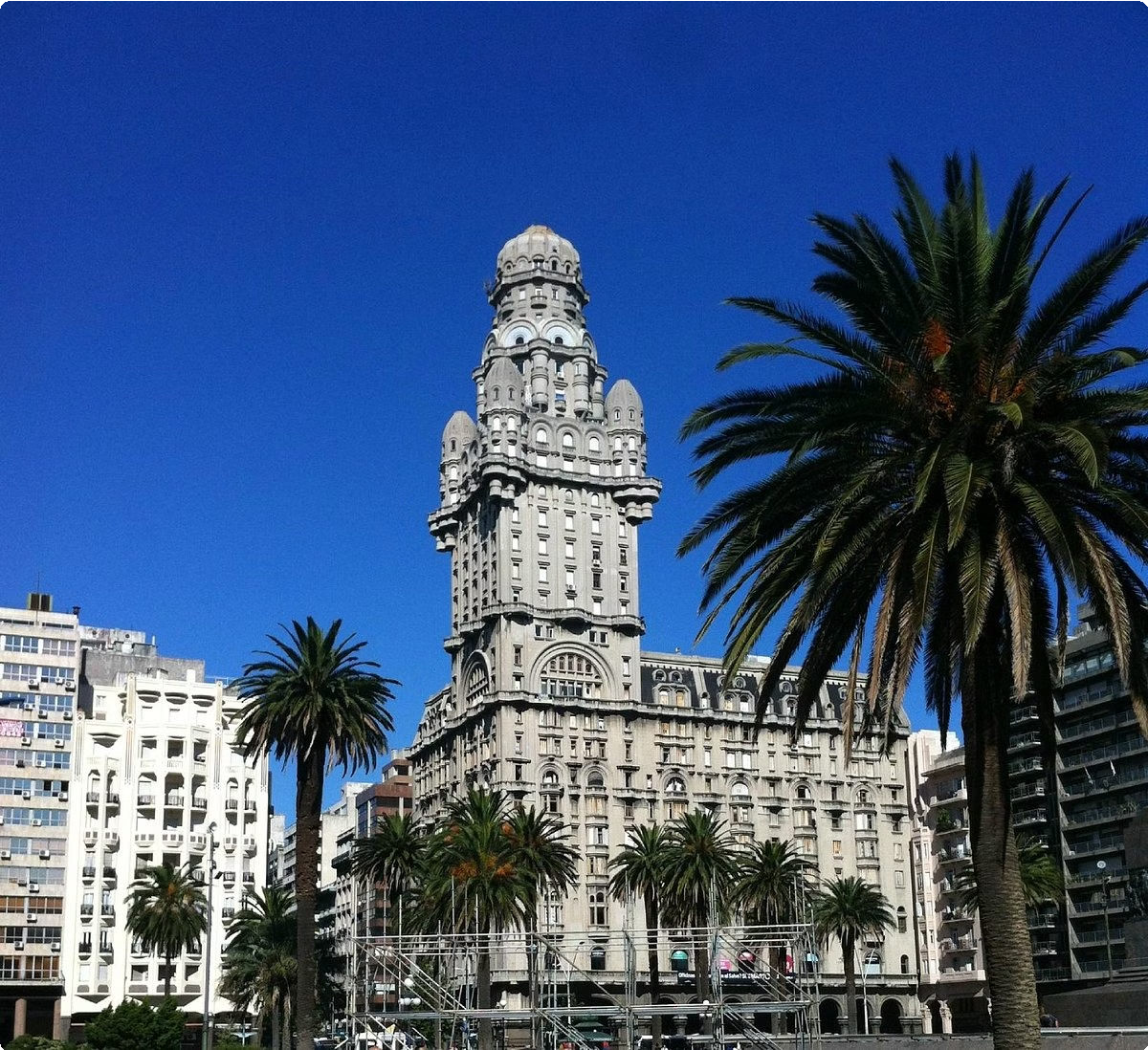
From the iconic Palacio Salvo to the picturesque Rambla, Montevideo exudes a charm that captivates both locals and tourists alike. The city’s laid-back atmosphere and friendly locals make it a welcoming destination for travelers seeking an authentic Uruguayan experience.
This bustling metropolis is also a hub for educational institutions and technological innovation, reflecting Uruguay’s progressive outlook. With its vibrant street life, lively festivals, and rich history, Montevideo offers a tapestry of experiences that leaves a lasting impression on all who visit.
Punta del Este, a popular beach resort in Uruguay
Punta del Este is a glamorous and vibrant beach resort city located on the southern tip of Uruguay. Known for its luxurious seaside properties, upscale shopping destinations, and lively nightlife, Punta del Este attracts visitors from around the world seeking a taste of the good life.
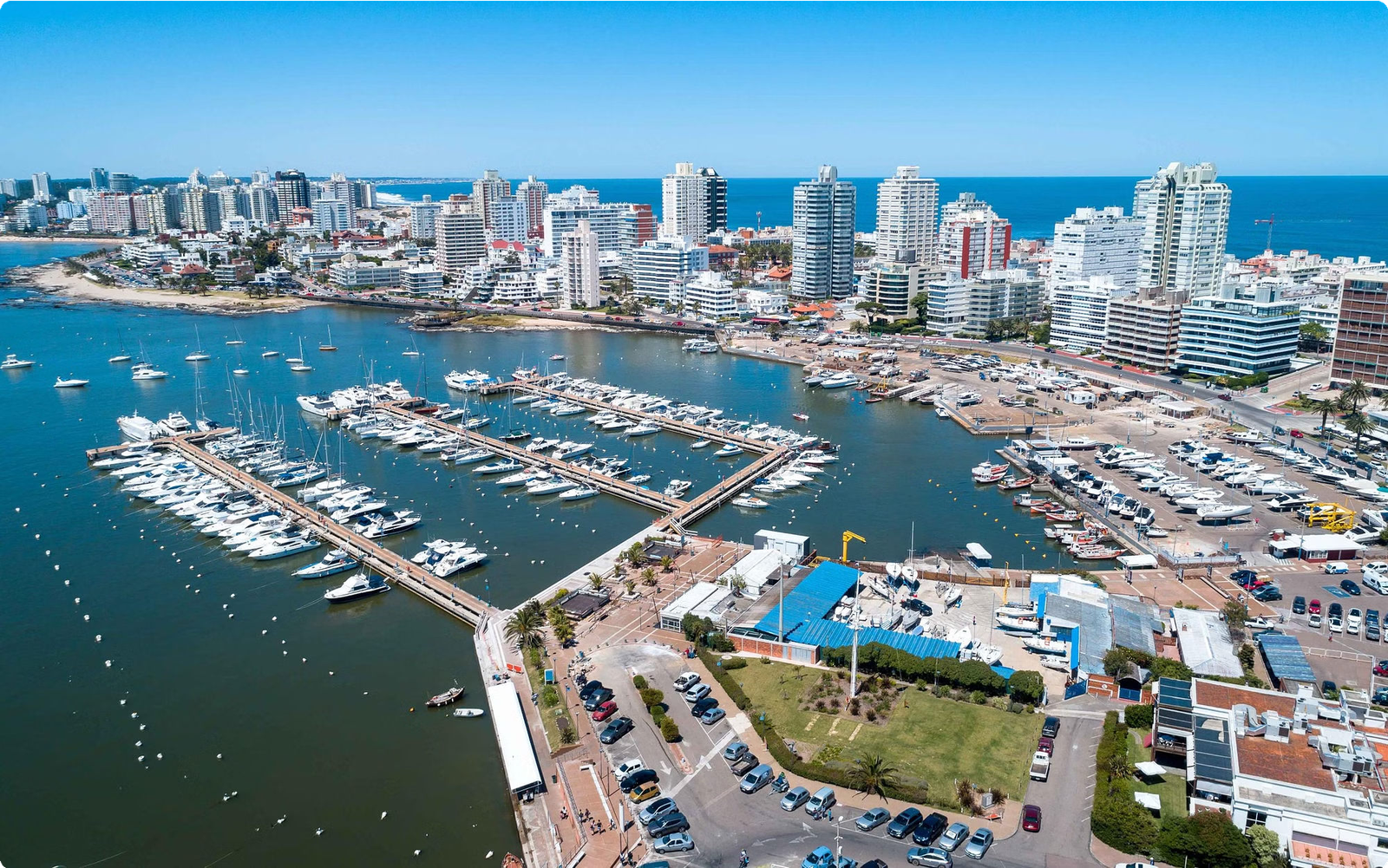
The stunning beaches of Punta del Este are a major draw, offering pristine white sands and clear blue waters perfect for sunbathing, swimming, and water sports. For those seeking a more exclusive experience, the nearby La Barra neighborhood is famous for its trendy beach clubs and upscale restaurants.
The city also boasts impressive examples of modern and contemporary architecture, including the iconic “Hand in the Sand” sculpture protruding from the Playa Brava beach. Additionally, Punta del Este hosts vibrant art galleries, cultural events, and international music festivals, adding a dynamic flair to its already lively atmosphere.
With its blend of natural beauty, high-end amenities, and a pulsating social scene, Punta del Este remains a top-choice destination for travelers seeking an unforgettable and sophisticated beach retreat.
Colonia del Sacramento, a historic city in Uruguay
Colonia del Sacramento, founded by the Portuguese in 1680, is a picturesque colonial city located on the shores of the Rio de la Plata. Its charming cobbled streets, colorful colonial buildings, and historic Spanish and Portuguese architecture make it a UNESCO World Heritage Site, attracting visitors from around the world.
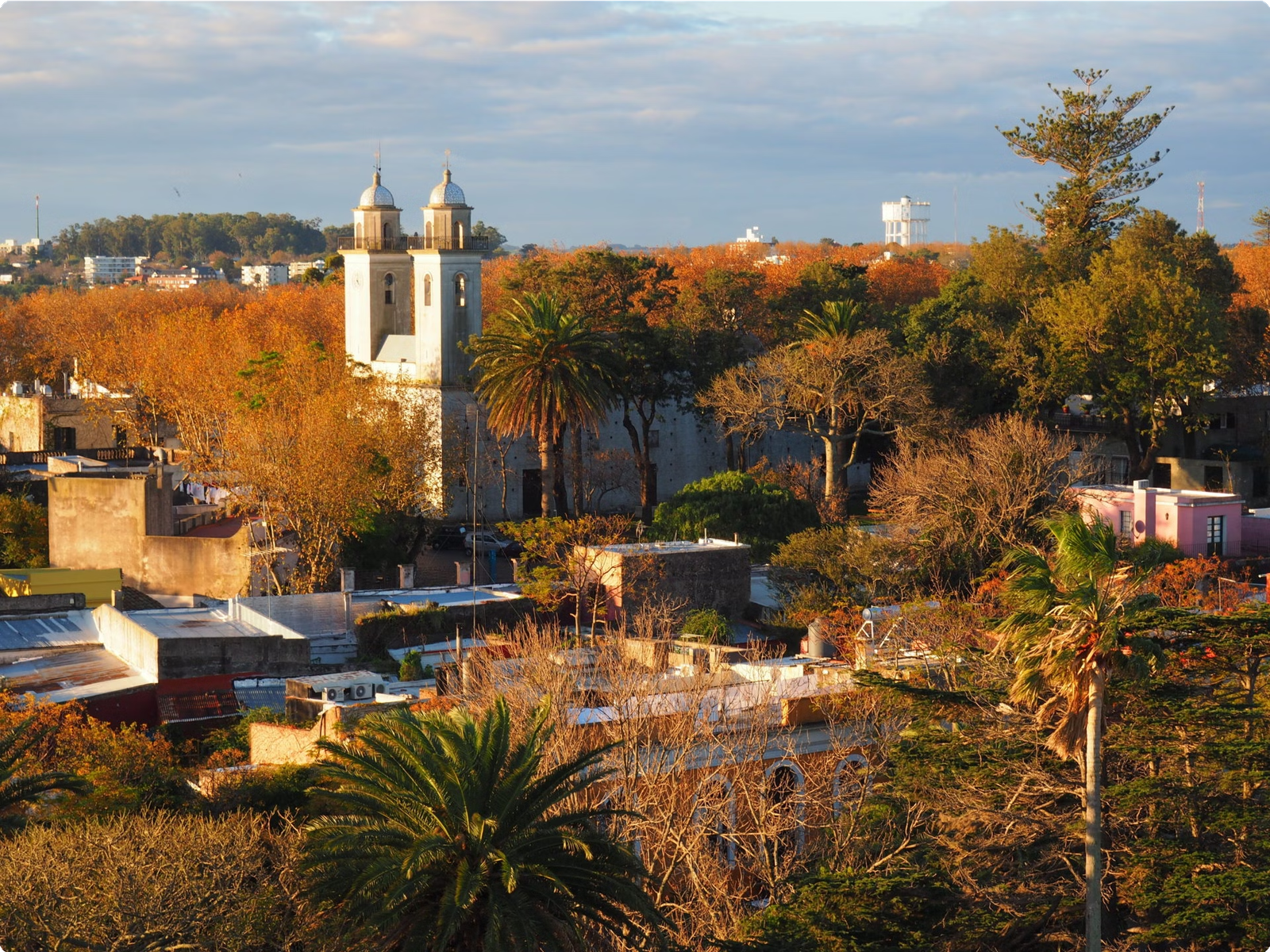
The city is known for its rich history, evident in the well-preserved landmarks such as the 17th-century Convent of San Francisco and the lighthouse, offering panoramic views of the city and the river.
Visitors can wander through the quaint streets, visit museums, and enjoy the local cuisine in one of the many charming restaurants. The city’s peaceful ambiance and beautiful sunsets have made it a popular destination for artists, photographers, and romantics alike.
Colonia del Sacramento’s unique blend of history, culture, and natural beauty makes it a must-visit destination for anyone exploring the treasures of Uruguay.
Salto, known for its hot springs in Uruguay
Salto, a city located in northwestern Uruguay, is renowned for its natural hot springs, making it a popular destination for wellness and relaxation. The thermal waters of Salto are rich in minerals and are believed to have therapeutic properties, attracting visitors seeking rejuvenation and healing.

The city offers a range of thermal spas and resorts, providing various wellness treatments and activities such as hot spring baths, massages, and mud therapies. Tourists can immerse themselves in the soothing hot waters while enjoying the picturesque surrounding landscapes.
Additionally, Salto boasts charming riverside areas, serene parks, and cultural attractions that complement the hot spring experience. Visitors can indulge in local cuisine, explore the historic architecture, and engage in outdoor recreational pursuits, creating a well-rounded and rejuvenating travel experience.
This tranquil city’s hot springs provide an idyllic retreat for travelers seeking relaxation, natural beauty, and a health-oriented getaway in the heart of Uruguay.
Piriapolis, a Charming Coastal Town in Uruguay
Piriapolis is a picturesque coastal town located on the southern coast of Uruguay, known for its captivating beaches and laid-back atmosphere. The town is named after its founder, the visionary Francisco Piria, and has a rich history dating back to the late 19th century. Its charming waterfront promenade offers stunning views of the Atlantic Ocean, making it a popular destination for leisurely strolls and breathtaking sunsets.
The town’s architecture boasts a mix of styles, ranging from beautiful colonial buildings to modern beachfront homes, creating a unique and inviting ambiance. Visitors can indulge in delicious seafood at the local restaurants and explore the quaint shops and artisanal markets, where they can find handcrafted souvenirs and locally made goods.
Piriapolis is also a haven for outdoor enthusiasts, offering various water sports, including sailing, fishing, and swimming. The nearby Cerro San Antonio provides a panoramic vista of the town and coastline, making it an ideal spot for hiking and birdwatching. With its old-world charm and natural beauty, Piriapolis is an enchanting destination for travelers seeking relaxation and a taste of authentic Uruguayan coastal life.
Rocha, a Natural Paradise in Uruguay
Rocha is a region in Uruguay known for its stunning natural beauty. The unspoiled coastline, pristine beaches, and diverse landscape make it a true paradise for nature enthusiasts. With an expansive national park, inland lagoons, and wildlife reserves, Rocha offers a unique opportunity to immerse oneself in Uruguay’s natural wonders.
The region is also home to traditional fishing villages, providing a glimpse into the authentic Uruguayan coastal lifestyle. Rocha is a birdwatcher’s haven, with numerous species of birds inhabiting the area, making it a birdwatching paradise.
Visitors can explore the rocky outcrops, sandy beaches, and lush forests, experiencing the beauty of Uruguay’s natural landscapes. Whether it’s relaxing on pristine beaches, hiking in the national park, or birdwatching in the lagoons, Rocha offers an unforgettable nature retreat.
The unique blend of coastal beauty, biodiversity, and local culture makes Rocha a must-visit destination for anyone seeking an immersive experience in Uruguay’s natural splendor.
Cabo Polonio, a remote and rustic village in Uruguay
Cabo Polonio is a hidden gem on the eastern coast of Uruguay, known for its remote and rustic charm. Tucked away in the midst of sand dunes and surrounded by the tranquil waters of the Atlantic Ocean, this village is a haven for nature lovers and those seeking a serene escape from the hustle and bustle of modern life.
The village has no paved roads or electricity, providing a truly off-the-grid experience. Visitors can explore the picturesque coastline, visit the historic lighthouse, and witness the breathtaking sunsets that paint the sky in vibrant hues.
This secluded paradise is home to a diverse array of wildlife, including sea lions, birds, and even the occasional wandering sea turtle. With its relaxed atmosphere and untouched beauty, Cabo Polonio offers a unique opportunity to disconnect and immerse oneself in the peaceful simplicity of coastal living.
For an authentic experience, visitors can stay in one of the eco-friendly, candle-lit accommodations, dine on freshly caught seafood, and marvel at the star-filled night sky, unobstructed by city lights. Cabo Polonio is a destination unlike any other, inviting travelers to slow down and embrace the unspoiled beauty of Uruguay’s coastline.
Jose Ignacio, a Trendy Beach Town in Uruguay
Jose Ignacio is a picturesque and trendy beach town located in Uruguay, known for its beautiful coastal landscapes and relaxed atmosphere. The town attracts visitors seeking a luxurious and peaceful escape, offering pristine white sandy beaches, clear turquoise waters, and stunning sunsets. A popular destination for celebrities and jet-setters, Jose Ignacio is renowned for its upscale hotels, stylish boutiques, and sophisticated restaurants, creating an exclusive and glamorous ambiance.
The town seamlessly blends modern elegance with the natural beauty of its surroundings, making it an ideal retreat for discerning travelers. Visitors can engage in various activities such as sunbathing, swimming, and indulging in delectable cuisine while enjoying the laid-back lifestyle and charming coastal charm that Jose Ignacio exudes.
With its chic and fashionable vibe, Jose Ignacio offers a unique experience for travelers seeking a luxurious beach getaway in Uruguay.
La Paloma, a laid-back beach destination in Uruguay
La Paloma is a charming coastal town located on the southern coast of Uruguay. Known for its laid-back atmosphere and pristine beaches, it is a perfect destination for those seeking relaxation and tranquility. The town offers a mix of beautiful sandy shores, charming seaside cottages, and a welcoming local community.

The beaches of La Paloma are popular for their natural beauty, with soft golden sands stretching along the coastline and crystal-clear waters perfect for swimming and surfing. Visitors can enjoy leisurely strolls along the shore, take part in beach sports, or simply unwind and soak up the sun.
The town itself exudes a bohemian and artistic vibe, with colorful murals adorning the streets, small
artisanal shops selling handmade crafts, and cozy cafes serving local delicacies. In addition to its natural beauty, La Paloma offers a variety of outdoor activities including horseback riding, hiking, and bird- watching in the nearby nature reserves.
Punta del Diablo, a Bohemian Fishing Village in Uruguay
Punta del Diablo, located on the eastern coast of Uruguay, is a picturesque and charming bohemian fishing village. With its laid-back atmosphere and stunning coastal landscapes, this village has become a popular destination for travelers seeking a relaxed and authentic experience. The village is known for its vibrant arts scene, attracting local artisans and visitors interested in exploring the bohemian culture.
The pristine beaches of Punta del Diablo offer visitors the opportunity to unwind and enjoy the natural beauty of the region. Visitors can immerse themselves in the local fishing culture, observing the daily activities of fishermen and experiencing the traditional way of life in this coastal community. The village’s colorful buildings and narrow streets add to its unique and inviting ambiance.
Travelers can also explore the nearby Santa Teresa National Park, which boasts diverse ecosystems, including sand dunes, forests, and lagoons. This natural reserve provides opportunities for hiking, birdwatching, and wildlife observation. Additionally, Punta del Diablo hosts cultural events and festivities throughout the year, providing a glimpse into the lively spirit of the local community.
Chuy, a border town between Uruguay and Brazil
Chuy is a unique border town that sits on the boundary between Uruguay and Brazil. It is divided by a main avenue, with one side belonging to Brazil and the other side to Uruguay. This interesting geographical setup creates a fascinating blend of cultures and influences, making Chuy a truly distinctive place to visit.
The town is known for its bustling border market where visitors can find a wide variety of goods and products from both countries. The market is a vibrant hub of activity, filled with colorful displays and the sounds of traders haggling and chatting in Portuguese and Spanish.
Chuy is a popular destination for travelers who are looking to experience the lively energy and unique dynamics of a border town. It offers a glimpse into the everyday life of people living on the border, and the interactions between two neighboring countries.
Fray Bentos, known for its meat industry in Uruguay
Fray Bentos is a small town in Uruguay known for its rich history in the meat industry. The town gained international recognition for its meatpacking industry, which played a significant role in Uruguay’s economy. The industrial complex in Fray Bentos, including the Anglo Meatpacking Plant, has been designated as a UNESCO World Heritage site, showcasing the town’s pivotal role in the development of the global meat industry.
The town’s heritage is deeply intertwined with the production and export of high-quality meat products. Visitors to Fray Bentos can explore the Meatpacking Museum, which offers insights into the town’s meat industry history and its impact on Uruguay’s economy and culture. The museum displays historic
artifacts, machinery, and photographs, providing a fascinating journey through the evolution of the meat industry in the region.
Additionally, Fray Bentos is renowned for its delicious traditional Uruguayan cuisine, featuring delectable meat dishes that highlight the town’s culinary expertise. The local restaurants and eateries offer authentic Uruguayan delicacies, allowing visitors to savor the unique flavors deeply rooted in the town’s meat industry heritage.
Tacuarembo, the Birthplace of Carlos Gardel in Uruguay
Tacuarembó is a city in Uruguay known for being the birthplace of the iconic tango singer, Carlos Gardel. This charming city holds a significant place in the history of tango music and its culture. Visitors to
Tacuarembó can explore the Casa de Carlos Gardel, a museum dedicated to the life and legacy of the renowned singer. The museum displays personal belongings, memorabilia, and artifacts related to Gardel, offering a captivating insight into his early life and career.
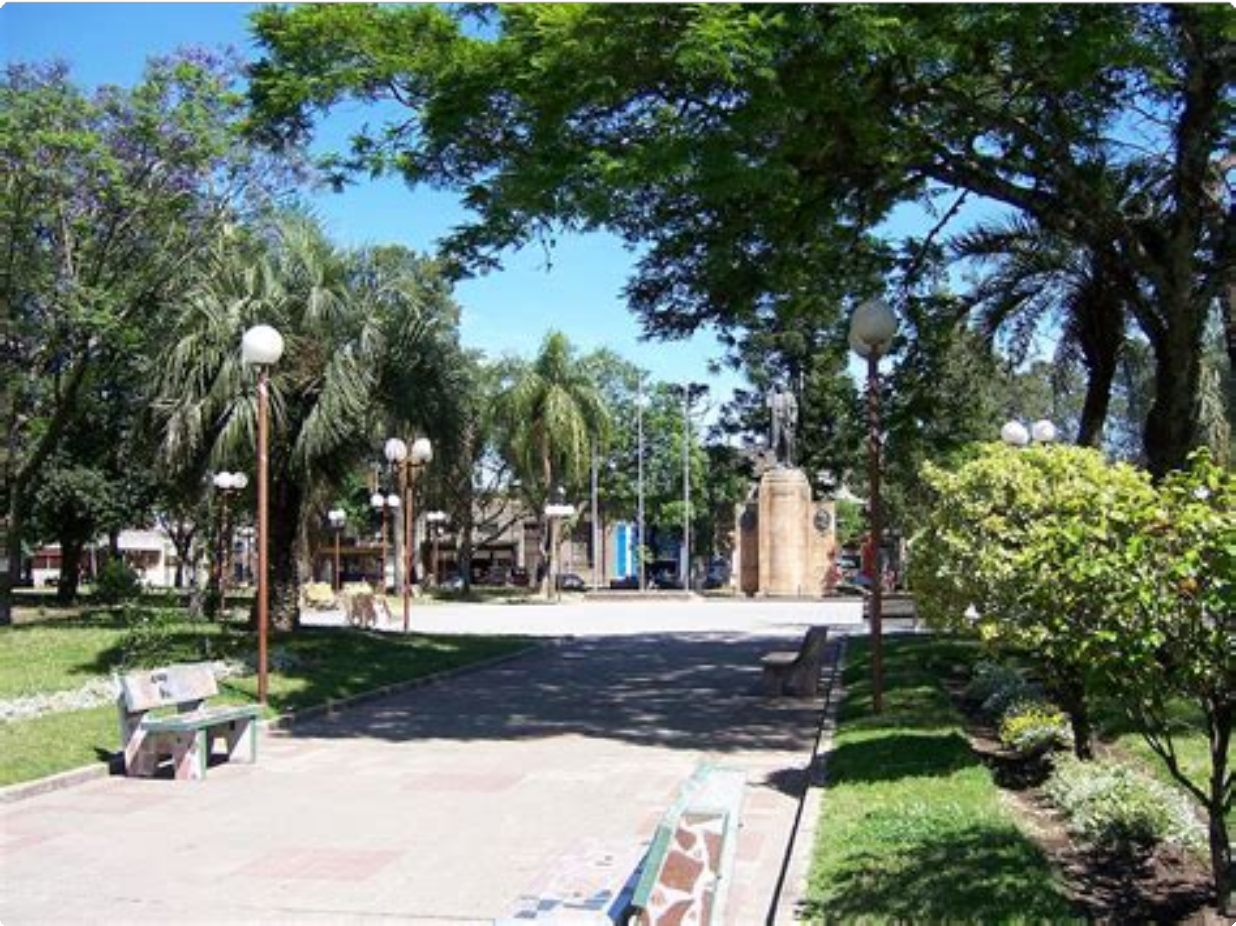
The city boasts a vibrant atmosphere and is often alive with the sounds of tango music drifting through the streets. It’s a place where visitors can immerse themselves in the rich musical heritage of Uruguay and learn about the influences that shaped Carlos Gardel’s journey to becoming a tango legend.
Surrounded by picturesque landscapes, Tacuarembó provides a serene setting that complements its cultural significance. It’s a must-visit destination for music enthusiasts, history buffs, and anyone with an appreciation for the arts.
For a truly immersive experience, travelers can also seek out local tango performances and events, allowing them to witness the passion and rhythm of this beloved dance form in the very place where one of its most revered figures began his extraordinary life.
Minas, a picturesque town in Uruguay
Minas is a charming and picturesque town nestled in the beautiful countryside of Uruguay. Known for its serene and tranquil atmosphere, this town is a hidden gem for travelers seeking a peaceful escape from the bustling city life. The town is surrounded by rolling hills, lush greenery, and quaint colonial architecture, creating a postcard-perfect setting for visitors to explore and enjoy.
Visitors to Minas can take leisurely strolls along the cobbled streets, admiring the well-preserved historic buildings and experiencing the warm hospitality of the local residents. The town’s central plaza is a hub of activity, with cafes and artisan shops offering a glimpse into the local culture and lifestyle.
The surrounding natural beauty of Minas provides ample opportunities for outdoor adventures, such as hiking, birdwatching, and horseback riding. The nearby streams and rivers offer a peaceful retreat for those seeking relaxation amidst nature’s splendor. With its idyllic setting and welcoming atmosphere, Minas is truly a must-visit destination for anyone exploring the enchanting landscapes of Uruguay.
Treinta y Tres, a Historic City in Uruguay
Treinta y Tres is a historic city located in the eastern region of Uruguay. It is known for its rich cultural heritage and historical significance, making it a fascinating destination for history enthusiasts and curious travelers. The city’s name, which translates to “Thirty-Three” in English, holds historical significance related to the Uruguayan Constitution of 1830. Visitors can explore the city’s charming streets lined with colonial-era buildings and learn about its role in Uruguay’s history.
The city is also surrounded by picturesque natural landscapes, offering opportunities for outdoor activities such as hiking and bird watching. The lush greenery and tranquil atmosphere provide a serene retreat for travelers looking to immerse themselves in Uruguay’s natural beauty. Additionally, the local cuisine in Treinta y Tres showcases traditional Uruguayan flavors, allowing visitors to savor authentic culinary delights during their stay.
Furthermore, the friendly and welcoming locals contribute to the city’s inviting atmosphere, making visitors feel at home as they delve into the historical and cultural marvels of Treinta y Tres. Whether exploring historical sites, enjoying nature’s tranquility, or indulging in local gastronomy, this historic city offers a captivating experience that combines the best of Uruguay’s past and present.
Conclusion
After exploring the diverse facets of Uruguay, it becomes evident that this South American gem has much to offer to travelers and explorers. From its rich cultural heritage to its picturesque landscapes, Uruguay stands as a unique and captivating destination. Whether it’s indulging in the local cuisine, immersing in the lively dance culture, or basking in the natural beauty of its cities and towns, Uruguay is a treasure trove of experiences waiting to be discovered.
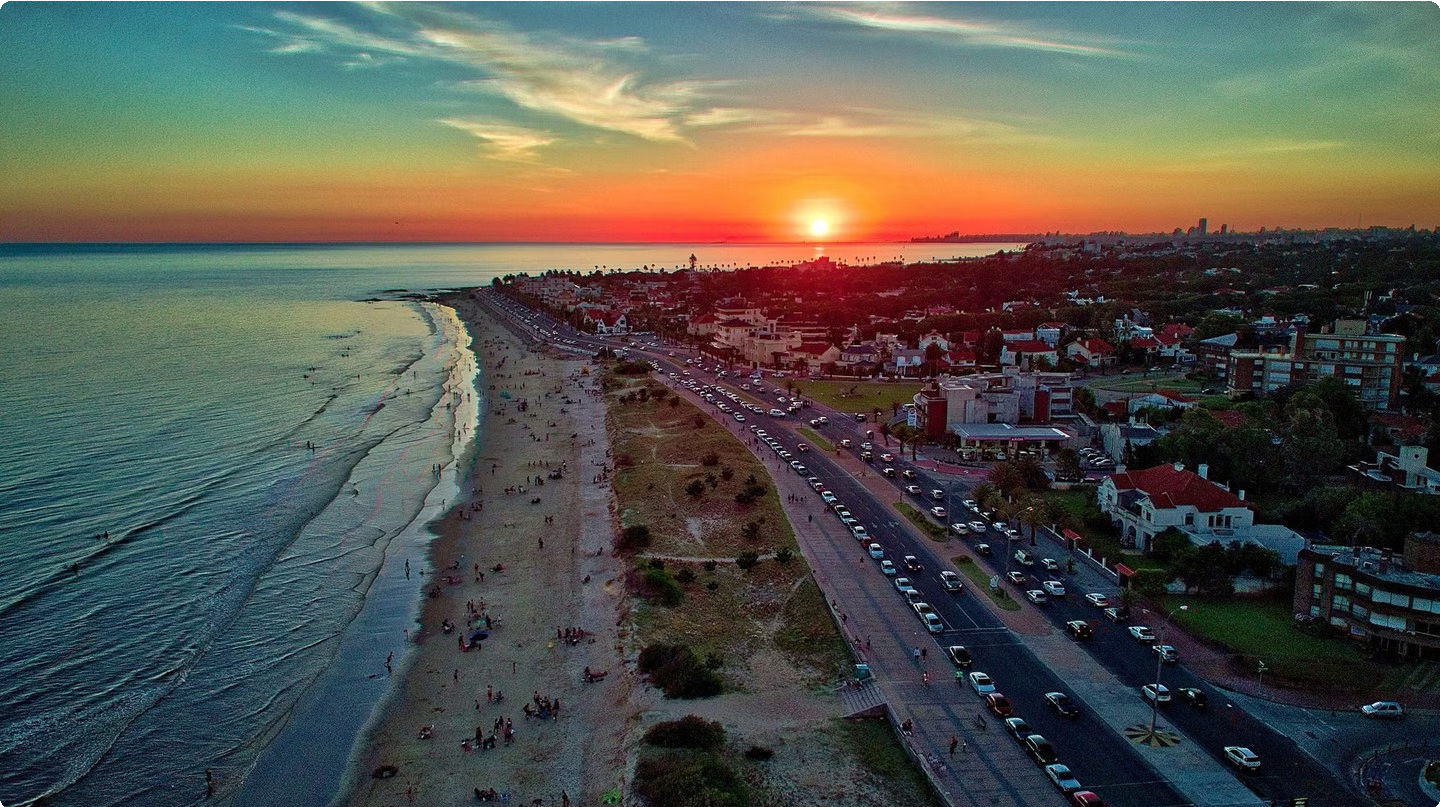
With its vibrant culture, welcoming people, and intriguing history, Uruguay leaves a lasting impression on those who have the pleasure of visiting. The warmth of its people and the charm of its cities make it a must-visit for anyone seeking an authentic South American experience. In conclusion, Uruguay beckons with open arms, promising unforgettable memories and a deep appreciation for its alluring wonders.